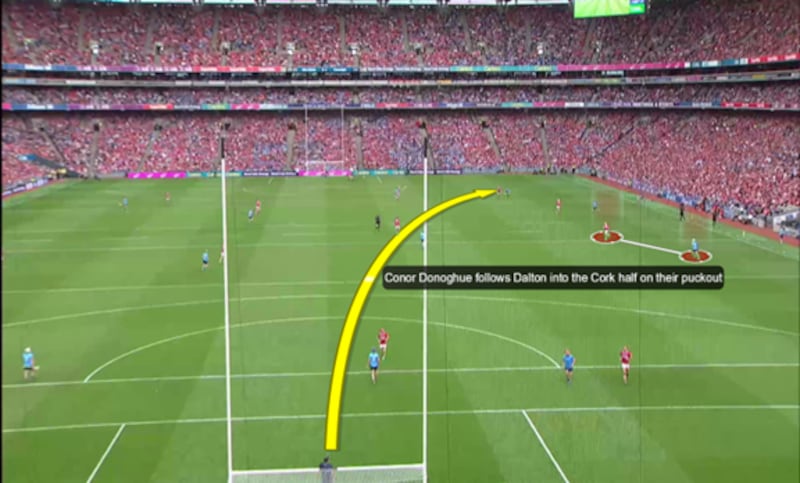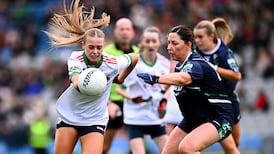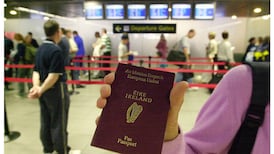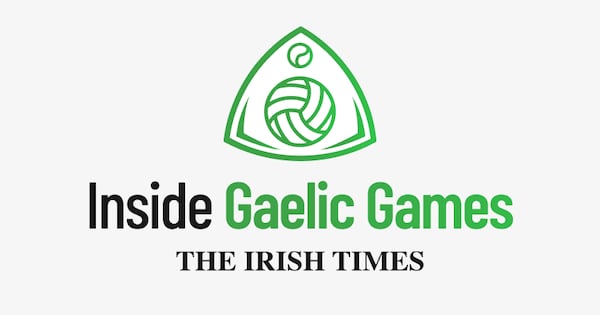The two most recent meetings between Cork and Tipperary paint similar pictures. In the League final, Cork delivered a commanding performance, winning 3-24 to 0-23, built on superior shot conversion and puckout strategy.
The Munster Championship clash was more one-sided again, finishing 4-27 to 0-24, although the contest was skewed by the pre-throw-in red card to Darragh McCarthy – a blow that disrupted Tipp’s structure and momentum from the outset. Despite the different contexts, Cork’s consistency has stood out across both games – particularly their efficiency from puckouts, discipline in possession, and ruthless finishing in front of goal.
Form of Hayes, Dalton & Barrett: Central to Cork’s direct threat

The most telling feature of the passing network from the Dublin game (above) is how Brian Hayes and Declan Dalton served as the primary targets for progression. Brian Hayes, with 5-8 so far in this year’s championship, is clearly the focal point of Cork’s attack, receiving high-volume, high-weight passes – particularly from his ’keeper Patrick Collins and Darragh Fitzgibbon in midfield.
Declan Dalton provides a second powerful outlet, often pulling to the left channel to win primary possession. He covered and retreated well on the Dublin puckouts and picked up breaks which created a platform for the Cork attack. Shane Barrett’s role is also pivotal to Cork’s puckout success. He regularly made sharp decoy runs and ran support loops into traditional puckout zones (45–65m), dragging markers out of position and opening lanes for Hayes or Dalton to receive clean ball.

This Hayes-Dalton-Barrett trio operated as a fluid attacking triangle, combining power, pace, and support running, giving Cork multiple ways to unlock the Dublin defence.
Ronan Maher vs Brian Hayes
A pivotal battle. Hayes has been a revelation this season, and has been involved in 20 of the 35 Cork goals this year (10 goals, 10 assists) not just scoring, but in the way he links play and drags defenders out of position. Maher’s capacity to man-mark and his overall defensive prowess will be thoroughly tested.
If Hayes wins primary possession and breaks ball for Cork runners in the middle third, Cork’s inside forwards will benefit hugely. Below we see Dan Morrissey pinning Brian Hayes during a Munster Championship puckout – targeting Hayes’s catching and hurling arm while attacking the ball at its highest point.

Once the physical contest is engaged, the key becomes defensive structure – and Limerick excel in this moment, providing strong cover and positioning around the breaking ball.

Bryan O’Mara vs Declan Dalton
O’Mara’s positioning will be critical in managing Tipp’s puckout threat. Dalton often drifts deep to contest or pick up the breaks from long puckouts, creating a dilemma for his marker. Does O’Mara push up and follow, hoping to win the break and maintain pressure? Or does he sit deeper and more central, to provide a puckout option for Shelly, as we saw with the second goal versus Kilkenny below?
It’s a classic risk-reward scenario. Push high to win the break and Tipp can launch an attack; get caught too far forward and Cork suddenly have space to exploit in behind, with runners like Fitzgibbon and O’Mahony. O’Mara’s decisions in these moments could shape the rhythm of Tipp’s defensive performance.

The midfield duel – Where the game could swing
Willie Connors and Conor Stakelum will probably line out against Darragh Fitzgibbon and Tim O’Mahony in midfield, where Cork seem to have the edge. Fitzgibbon’s athleticism and O’Mahony’s distribution are crucial in Cork’s build-up. Below we see O’Mahony’s movement for Collins’s restart that led to Connolly’s goal against Dublin.

Both Tipp men must track religiously and get goalside quickly when possession turns over. Failure to do so could open central lanes that Cork love to exploit with late runners. It’s either sprint five yards or get goalside of your man – do neither, and it’ll be a long afternoon.

Tipp’s restarts
Rhys Shelly’s puckout strategy is one of Tipperary’s most important weapons. He strikes a fine balance between short, mid-range and long deliveries, making it extremely difficult for opposition teams – and even analysts – to identify consistent patterns. His one-step puckout causes problems: the quick trigger limits time for defensive set-ups and disguises his intended target.
Shelly can ping accurate passes to the wings, float balls into space behind midfield, or deliver short to his half-backs under pressure. That unpredictability forces teams to second-guess their press and gives Tipp forwards a real advantage in timing their runs.
Below we see him finding O’Mara over TJ Reid’s head. Will this stop Dalton offering cover to his half-back line?

The next puckout he hits is an 80-yard puckout behind Deegan to Ormond who identifies the space – and where there is space there is danger, particularly in Croke Park.

Comes down to both inside lines
Tipperary’s inside line is higher-scoring, but Cork’s looks the more lethal. Tipp’s trio of Darragh McCarthy, John McGrath and Jason Forde have averaged 18 points per game across seven matches, while Cork’s Horgan, Hayes and Connolly have averaged 17 in six. Tipp may have more volume, but Cork’s attack carries greater efficiency and goal threat.
[ All-Ireland hurling final: Throw-in time, where to watch, story so farOpens in new window ]
Tipp’s game intelligence was central to their dismantling of Kilkenny, driven by the sharp instincts of their inside forwards. So far in this year’s championship, McGrath (5-14) and Forde (3-14) have led the scoring charge, with McCarthy offering energy and movement around them. McGrath gave Huw Lawlor a torrid time – using double movements, delayed runs and smart rotation to constantly unbalance Kilkenny’s full-back line.
A game rich with narratives awaits. Whether it’s Cork’s explosive structure or Tipp’s hunger for redemption, this final could come down to moments of discipline, key matchups, and who displays the greatest composure and control going down the home stretch.
Jeffrey Lynskey managed Galway to three All-Ireland minor hurling titles. He is also a former Galway under-20 manager and is currently an MSc student in Sports Performance Analysis at Setu Carlow.











